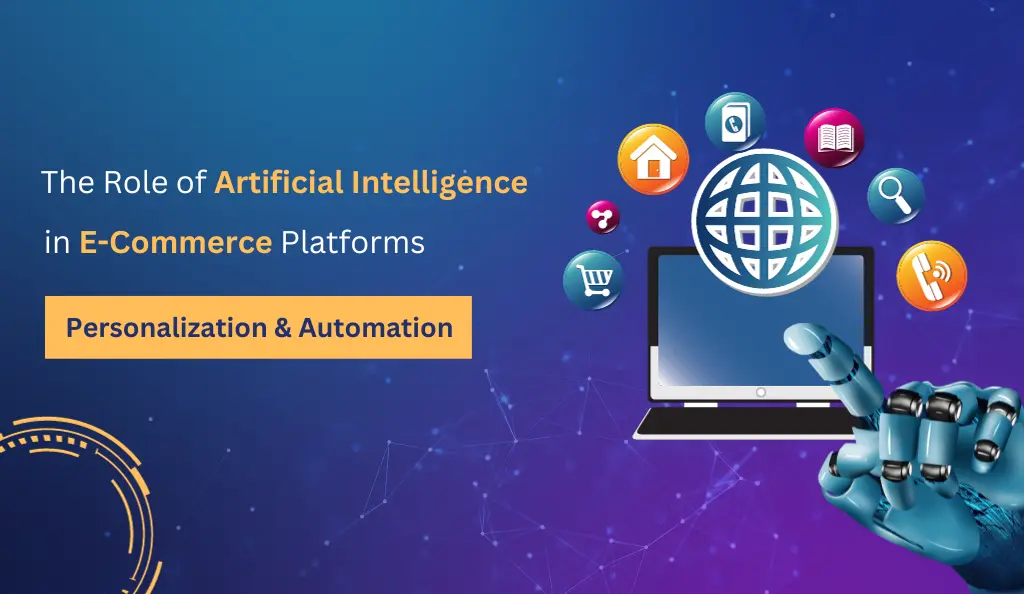In recent times, there has been a quick growth in the e-commerce industry and businesses have been on the constant look-out for innovative ways to be competitive. The integration Artificial Intelligence (AI) tools has been a transformative force in this field.
These tools not only streamline operations but also significantly enhance customer experiences and increase sales. Let’s explore how AI is reshaping the e-commerce landscape and how businesses can leverage this technology to drive growth.
1. Personalized Shopping Experience
Personalization is key to creating a unique shopping experience that resonates with customers. AI plays a crucial role in delivering personalized experiences by analyzing customer behavior, preferences, and past interactions.
AI-powered recommendation engines analyze a customer’s browsing history, purchase behavior, and preferences to suggest relevant products in real-time. Retail giants like Amazon and Netflix use this technology to make product recommendations that influence purchasing decisions. For e-commerce businesses, implementing recommendation engines can lead to increased average order value and higher customer satisfaction.
AI also powers personalized email campaigns. By using AI tools to analyze customer data, businesses can send tailored offers, product suggestions, and updates that feel highly relevant to individual consumers, increasing the chances of conversion.
2. Chatbots and Virtual Assistants for Customer Support
AI-driven chatbots and virtual assistants have revolutionized customer service in e-commerce. These tools are available 24/7 and can handle a wide variety of customer inquiries, from answering frequently asked questions to guiding users through the purchasing process.
For example, many e-commerce sites deploy chatbots to help customers navigate the site, track orders, process returns, and answer product-related queries. This immediate assistance boosts customer satisfaction by providing fast, efficient service, and it helps businesses reduce the costs associated with hiring a large customer support team.
Furthermore, AI-powered virtual assistants can offer conversational commerce experiences, where customers can interact with AI to make purchases directly through messaging platforms or voice assistants, providing a more seamless shopping experience.
3. Inventory Management and Demand Forecasting
AI can help e-commerce businesses manage their inventory more efficiently by predicting demand and optimizing stock levels. AI-powered predictive analytics tools use historical data, trends, and seasonality to forecast product demand accurately.
With this technology, businesses can avoid overstocking or understocking inventory, which reduces the risk of lost sales or unnecessary markdowns. It can also help companies identify popular products and trends early on, allowing them to make data-driven decisions about restocking or promoting specific items.
Additionally, AI tools can be used to automate inventory tracking and alert businesses when stock levels are low, helping them maintain optimal stock without constant manual monitoring.
4. Dynamic Pricing Strategies
AI tools can optimize pricing strategies by adjusting product prices based on a range of factors, such as demand, competitor pricing, customer behavior, and market trends. This process, known as dynamic pricing, enables businesses to maximize revenue and remain competitive in a fast-paced e-commerce environment.
For instance, AI tools can increase prices during high demand periods or lower them when demand drops, ensuring that the business is always offering competitive prices while optimizing profits. Companies like Uber and airline booking platforms have long used dynamic pricing, and this technology is now making its way into the broader e-commerce industry.
By implementing AI-driven dynamic pricing, businesses can attract more customers, retain existing ones, and boost sales, especially during peak seasons or when inventory is at risk of being overstocked.
5. Visual Search and Image Recognition
Visual search technology, powered by AI, is an emerging trend in e-commerce that allows customers to search for products using images instead of keywords. Customers can upload a photo of a product they like, and AI tools will analyze the image and suggest similar items available in the store.
This feature enhances the shopping experience, especially for customers who are looking for specific products but may not know the right terminology or keywords. Brands such as Pinterest and ASOS have integrated visual search features into their platforms, allowing customers to easily find products based on images they upload.
Moreover, AI-based image recognition tools can help businesses optimize their product listings. These tools can tag products automatically, categorize them more accurately, and improve search engine optimization (SEO) by making it easier for customers to find what they are looking for.
6. Fraud Prevention and Security
In the fast-paced world of online shopping, e-commerce businesses must prioritize security to protect their customers and brand reputation. AI tools are essential in preventing fraud and ensuring safe transactions.
AI-powered systems can analyze purchase patterns and customer behavior to detect suspicious activity, such as unusual transaction amounts or multiple failed payment attempts. When these anomalies are detected, AI can flag them for further investigation or even block the transaction automatically, reducing the risk of fraudulent purchases.
Additionally, AI enhances security by offering biometric authentication, such as facial recognition or fingerprint scanning, which makes online shopping safer and more convenient for users.
7. Customer Insights and Marketing Automation
AI provides e-commerce businesses with valuable insights into customer behavior, allowing them to refine their marketing strategies. By analyzing data from various touchpoints—such as website visits, social media engagement, and purchase history—AI tools can help businesses identify trends, pain points, and opportunities for growth.
Using this data, AI-driven marketing automation tools can create highly targeted campaigns that reach the right customers at the right time. For example, AI can segment customers based on their shopping habits, sending them personalized offers or retargeting ads for abandoned carts, thereby improving conversion rates.
Conclusion
AI is no longer just a buzzword in the e-commerce world. It has become an integral part of business operations, enhancing customer experiences, optimizing internal processes, and boosting sales. By leveraging AI tools for personalization, customer support, inventory management, dynamic pricing, visual search, fraud prevention, and marketing automation, e-commerce businesses can stay ahead of the competition and create a seamless, engaging shopping experience for their customers.
As AI technology continues to evolve, businesses that embrace these tools will likely see continued growth and success in the ever-changing e-commerce landscape.

